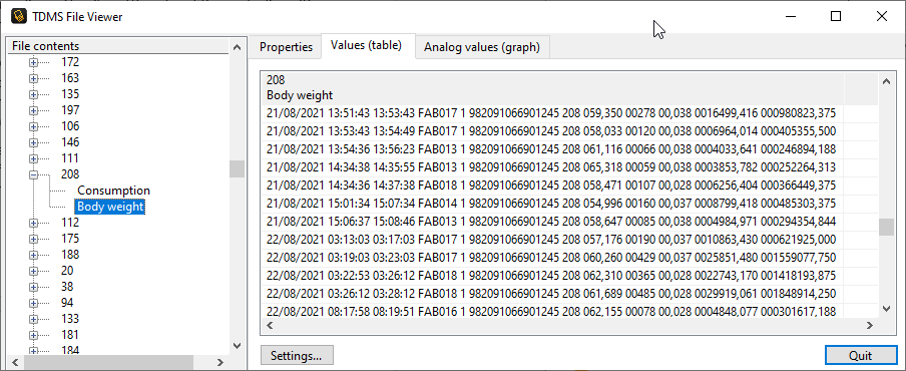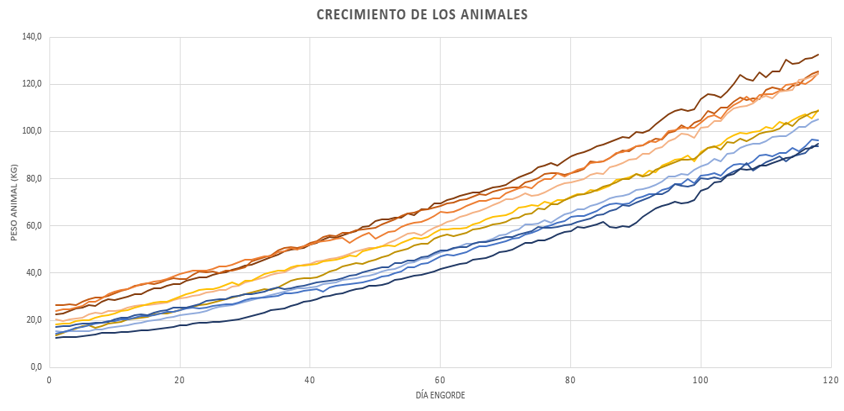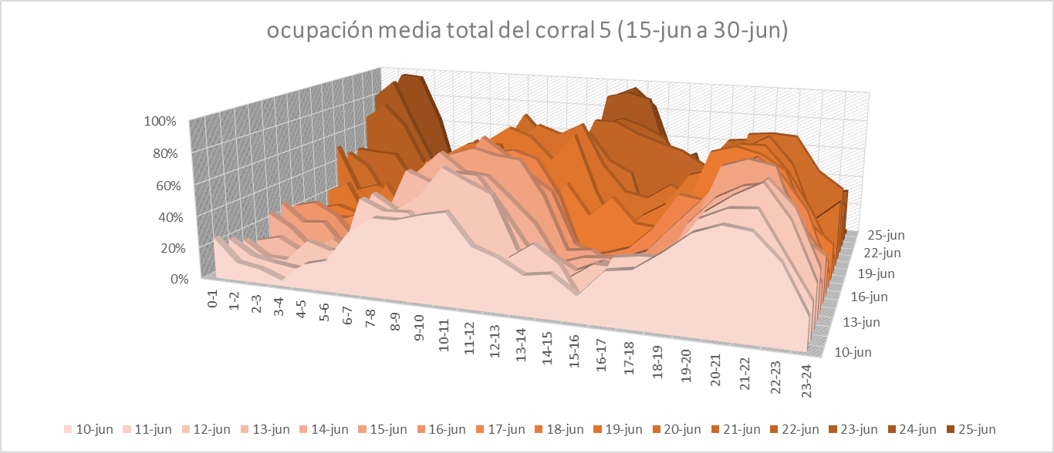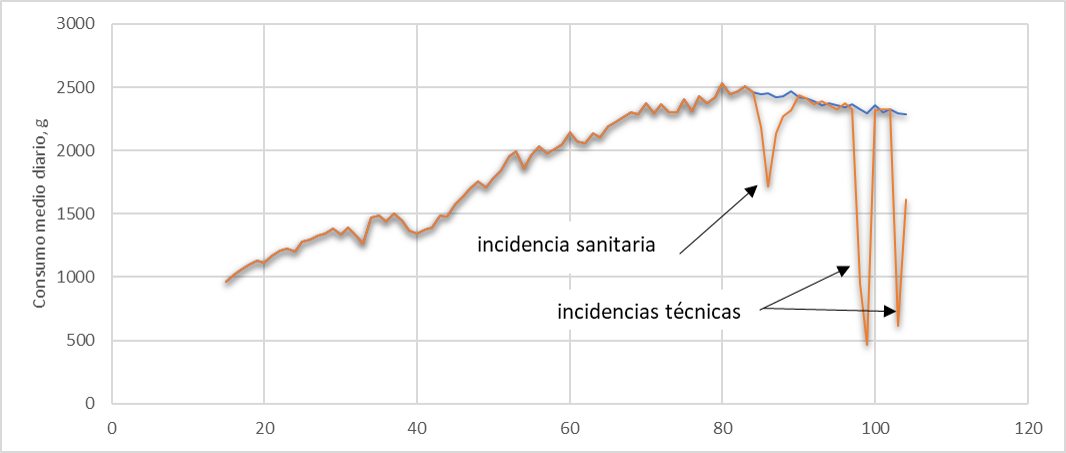2.2 Digitalization and BigData analysis in pig farms
Participants: J. Pomar, V. López
While traditional livestock systems have relied on a combination of experience, past data and eyeball observations to produce meat, digital livestock farming relies on data obtained in real-time, so such data has become a key part of the production. This data, which can come from a variety of sources (automatic feeding robots, weather stations, cameras, etc.), must be recorded and processed to obtain high-quality information. With this information, it is possible to find patterns capable of making predictions using certain techniques and methodologies to minimise risks, optimise production and create added value for the product.
Emerging smart technologies and Big Data processing offer farmers - and other actors involved in the supply and production chain - the opportunity to access huge amounts of information and give them the possibility to act on what they observe in real-time. This new, faster and more accurate way of proceeding changes how livestock farming is practised and affects all the organisations involved.
The recording of real-time, automated data is gaining momentum and has great potential to improve product quality, management practices, welfare, sustainable development and/or animal health, which undoubtedly benefits human health.
Digital integration and multi-source data management gen
The use and analysis of data can significantly improve the efficiency, quality and productivity of production, as well as other commercially focused factors (such as sales, warehousing, etc.).
Systems that handle these types of data take on a cyber dimension and obtain them from devices and applications designed to collect and analyse them. Bearing in mind that in traditional systems there have only been two dimensions, 1) the social dimension, which refers to the network of actors involved in the production system (farmers, input suppliers, service providers, consumers, etc.) and, 2) the physical dimension, which includes all the tangible elements of the farm (machines, buildings, animal capital), today it is necessary to update the approach in the livestock sector by incorporating this digital dimension, which may represent a paradigm shift in the future of livestock management.
Livestock digitisation leads to the emergence of new actors capable of developing and offering new products or services (intelligent equipment, software and hardware systems and data analysis). Thus, considerable progress has been made in the use of tools to monitor and collect information automatically and routinely from animals in a less labour-intensive way. However, the increasing amount and complexity of data generated by fully automated recording platforms pose challenges for a successful implementation in so-called precision livestock farming.
New technologies allow us to collect more and more data at decreasing acquisition cost, but this big data is often not clean: it may contain missing observations, messy, confusing data or outliers. Therefore, such information may need to be edited to make it truly useful for the end-user.

Furthermore, the integration of productive data (daily animal consumption, daily measured weight) with biological data of the animal (temperature, movement), and together with behavioural information (animal hierarchy in the group) as well as economic data (feed and transport cost, opportunity cost) should be the final objective in the farm management system.
In this sub-line, tools are developed to integrate all this dispersed information, generated by the different components on the farm, to respond to the needs of the farmer.
Automatic supervision of the animal
A major challenge in monitoring animal welfare is that most available monitoring methods are time-consuming, labour intensive and costly. Farmers often rely on their observations, or the observations of the support worker, to detect health and welfare problems. Even well-trained staff can miss situations where animals are in a critical state.
Real-time monitoring of the evolution of the animal and its environment should directly impact the productivity of the animal and better use of the resources used. Non-invasive sensors such as thermometers, accelerometers, microphones and infrared thermal cameras complement the information obtained through variables measured directly on the animal, which can be the consumption, through volumetric measurements of the feed supplied, and daily weight, through scales to weigh the animal.

The digitisation of processes related to the evolution of animals, the collection of information and generation of databases, the development and rapid improvement of algorithms and digital models provide an objective, complete and efficient digital visualisation of the animal.
This Subline studies the patterns observed from the continuous monitoring of the animals during the fattening phase. This information can help to improve the animal's health, welfare, performance as well as environmental load that is produced

Early detection of health and welfare events
PLF-based technologies use process engineering principles that allow farmers to monitor large populations of animals to improve animal health and welfare by detecting and even anticipating problems based on previous data to improve animal health and monitoring the animal's environment to ensure that it is satisfactory, as this could affect its welfare. Achieving these aspects reduces food safety problems and maximises the efficient use of resources.
A major issue for the coming years is the continuous monitoring of animal health within large animal groups. Some of the current challenges are the detection and containment of infections in large groups, as well as the reduction of antibiotic use.
As the safety and quality of food products must be ensured at all times, animal welfare is another important aspect of animal health. It must be kept in mind that an animal may appear to be very happy while it may be carrying an infection, virus or bacteria. The importance of animal welfare is demonstrated by the EU Animal Health Law (European Commission, 2016).
